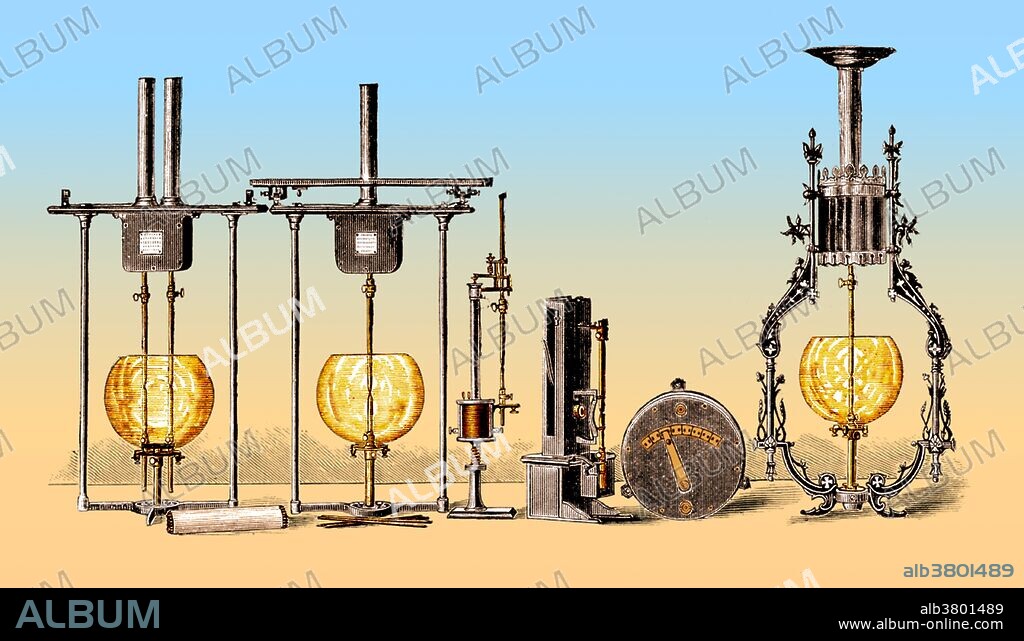alb3801489
Brush Electric Arc Lights, 1881

|
Add to another lightbox |
|
Add to another lightbox |



Title:
Brush Electric Arc Lights, 1881
Caption:
Electric Arc Lights made by Brush Electric Company of Cleveland Ohio. An arc lamp produces light by an electric arc (also called a voltaic arc). The carbon arc light, which consists of an arc between carbon electrodes in air, invented by Humphry Davy in the first decade of the 1800s, was the first practical electric light. It was widely used starting in the 1870s for street and large building lighting until it was superseded by the incandescent light in the early 20th century. It continued in use in more specialized applications where a high intensity point light source was needed, such as searchlights and movie projectors until after World War II. The carbon arc lamp is now obsolete for all of these purposes and is only still made for very specialized purposes where a high intensity UV source is needed. Illustration appeared in Scientific American April 2, 1881, no artist credited.
Personalities:
Credit:
Album / Science Source
Releases:
Model: No - Property: No
Rights questions?
Rights questions?
Image size:
4800 x 2757 px | 37.9 MB
Print size:
40.6 x 23.3 cm | 16.0 x 9.2 in (300 dpi)
Keywords:
1880S • 1881 • 19TH CENTURY • AMERICA • AMERICAN • APPLIED SCIENCE • ARC LAMP • ARC LIGHT • ART • ARTWORK • BRUSH ELECTRIC ARC LIGHTS • BRUSH ELECTRIC COMPANY • BRUSH • CARGO LAMP • CELEBRITY • CHARLES BRUSH • CHARLES F. BRUSH • CHARLES FRANCIS BRUSH • COLOR • COLORIZED • DOUBLE LAMP • DRAWING • ELECTRIC ARC LIGHT • ELECTRIC CARBON ARC LAMP • ELECTRIC • ELECTRICAL • ELECTRICITY • ENHANCE • ENHANCEMENT • FAMOUS • FOCUSING LAMP • HEAD-LIGHT LAMP • HEADLIGHT LAMP • HISTORIC • HISTORICAL • HISTORY • ILLUMINATION • ILLUSTRATION • ILLUSTRATIONS • IMPORTANT • INVENTION • LIGHTING • NOTABLE WELL-KNOWN • ORNAMENTAL LAMP • SCIENCE • SCIENTIFIC AMERICAN • SINGLE LAMP • TECHNOLOGICAL • TECHNOLOGY • UNITED STATES • US • USA
 Pinterest
Pinterest Twitter
Twitter Facebook
Facebook Copy link
Copy link Email
Email

